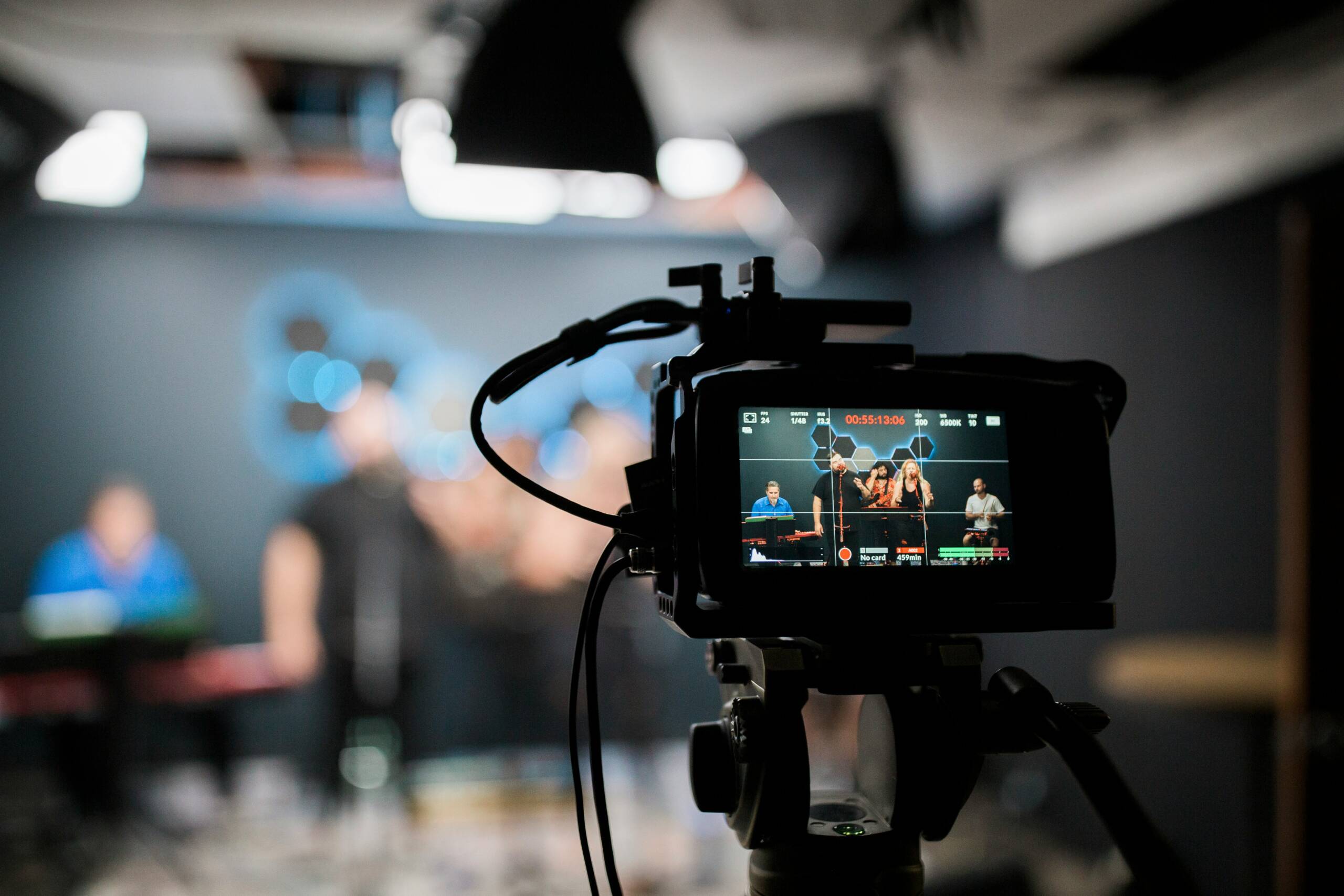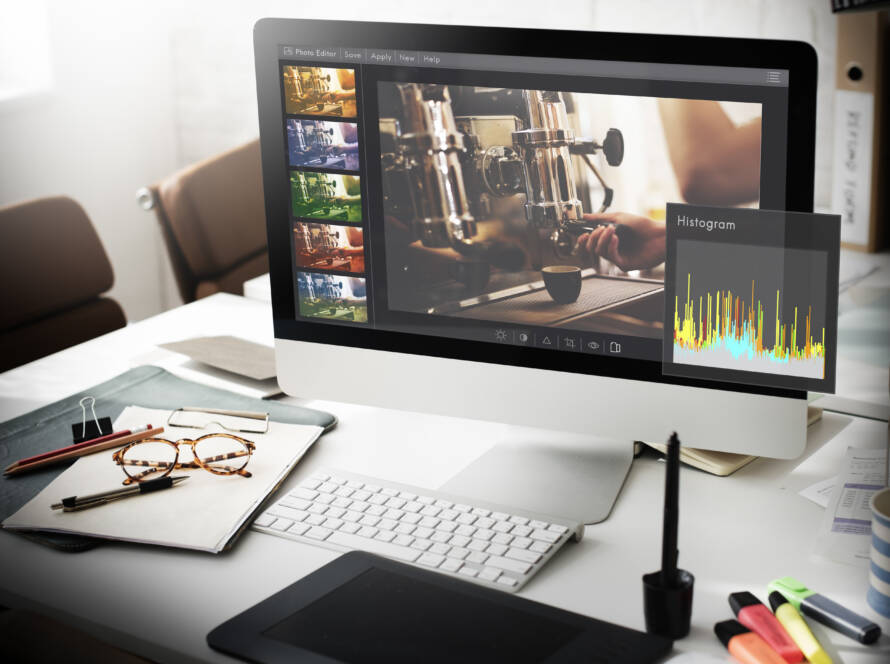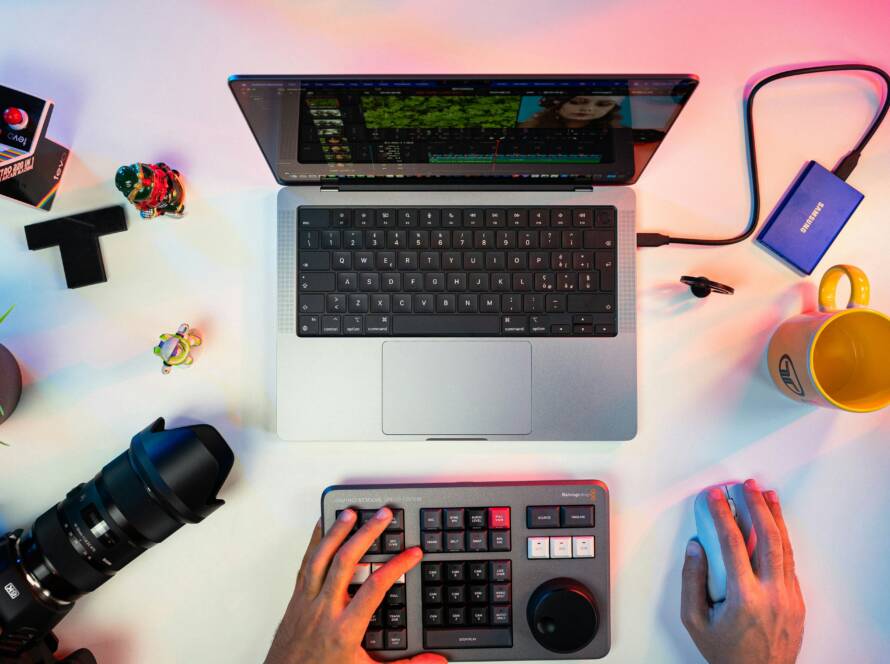A good visual and video content can get a viewer’s attention, this could get the ball rolling for content creators. All of this could start from the way the video was recorded.
In this article, one of our visual imaginary will guide you on how to properly shoot a video for your vlogs and short-form video content.
Table of Content
- Best Tips on Video Recording for Content Creators
- Horizontal and Vertical Video Recording
- Factors to Consider in Video Recording
- Equipment for Video Recording for Content Creators
- Camera Angles on Video Recording
- Lighting for Video Recording
- Recording an Intro and Outro
- Recording a B-Roll
- How Video Recording Affects the Final Video Content
- FAQ
- What are some best tips on video recording for content creators?
- What’s the difference between horizontal and vertical video recording?
- What are some key factors to consider in video recording?
- What type of equipment do I need for video recording?
- How do camera angles affect video recording?
- How important is lighting in video recording?
- Ways to Create Video Content Through Video Editing From Raw Footage
Best Tips on Video Recording for Content Creators
Video recording often serves as the bread and butter tool. It’s the cornerstone of most online content, from vlogs to webinars, and tutorials to digital marketing adverts. This hustle goes beyond just hitting the record button; it’s an art that requires mastering a few essential skills, tips, and tricks to make the most out of your content strategy. “Action!” isn’t just a fancy call out, it’s the initiation of a protocol that could make or break your production quality.
Say you’ve scripted your content, planned the shoot location, and now you’re ready to delve into the world of video recording. Where do you start? One crucial tip is to always ensure your camera settings are configured correctly. Be it your smartphone camera or a professional DSLR, tweaking the exposure, white balance, and focus settings can transform your video quality tremendously. Remember, great video content is predominantly about quality over quantity. Invest in good lighting equipment, it can majorly influence your video’s visual appeal. The angle of your camera can also subtly influence your audience’s perspective. So, experiment with camera angles until you find the one that best compliments your content. Let’s not forget the sound, it’s a major player too – remember to do a sound check before you start recording. You don’t want your brilliant content ruined by muddled audio. Scary possibility, right?
Horizontal and Vertical Video Recording
The choice between vertical and horizontal video largely depends on your platform and audience behavior. Just a few years back, horizontal footage was the go-to mode for video recording cameras. YouTube creators, filmmakers, and the advertising industry predominantly utilized the widescreen layout, exploiting the full potential of most TV and monitor screens.
However, the era of smartphones and social media has witnessed a profound shift. With platforms like Instagram and Snapchat specifically designed for mobile interfaces, vertical videos have become much more desirable. The reason is, that it’s less bothersome for users to hold their phone naturally, rather than switch to a landscape orientation. The mobile populace prefers content that fits with their usage habits – enter the age of vertical videos. So content creators, consider your platform and audience before choosing the orientation of your video recording camera.
Factors to Consider in Video Recording
Creating engaging video content goes beyond the mere act of pressing the record button. Several elements combined together can either make or mar the appeal of a video, especially to the intended audience. Whether the content creator is a newbie just branching out or a seasoned pro looking for fresh perspectives, these factors are absolutely pivotal.
Primarily, setting clear video content objectives makes a world of difference. Just like in a game of football, if you don’t know where the goalpost is, you will certainly not score, no matter how hard you try! Therefore, content creators need to decide what they aim to achieve with each video and strategize appropriately. Secondly, understanding the target audience is key; what tickles their fancy, what platforms they frequent, and what kind of content makes them stick around? Additionally, the quality and style of the video, the lighting, sound, the incorporation of appealing visual elements, and many more, all play a vital role in creating compelling video content that not only attracts views but builds a community of loyal followers! So, remember, creating video content is like baking a cake, each ingredient counts! Now, let’s grab the flour and preheat that oven!
Equipment for Video Recording for Content Creators
Choosing the right equipment plays a crucial role in the realm of video content creation. Whether you’re shooting an on-location vlog or creating professional quality tutorials, the right gear can make all the difference. One vital component of video production is selecting a reliable video editor. Now, we won’t be waving banners and saying, ‘choose this editor or else!’, but it’s certainly a piece of the puzzle that deserves careful consideration. A good video editor is like your trusty sidekick, helping turn raw footage into a polished masterpiece. So, before you set off on a shopping spree for the latest and greatest 4K camera, remember the importance of a good video editor in your content creation journey.
Now, let’s be honest, having top-notch equipment for video recording can significantly transform the game of content creation. But let’s not go overboard; your content can still shine brighter than a supernova without breaking your bank. Quality equipment doesn’t always come with a hefty price tag. Sometimes, paired with the skillful hands of a video editor, even a modest setup can create sparkling content. So, it’s more about using what you have to its maximum potential and less about having all pricy gadgets. Video creators, keep this in mind, not for my sake, but for the love of your wallet!
Moving on, let’s have a look at some essential equipment for video recording that every content creator should consider.
Camera: Your camera is the backbone of your setup. Whether you’re using your smartphone or a high-end DSLR, make sure it has good resolution and can record in HD or 4K if possible.
Tripod: A sturdy tripod is crucial to keep your shots steady. It also allows you to experiment with different angles and perspectives without worrying about shaky footage.
Microphone: Audio quality is just as important as visual quality in videos. Invest in a good microphone to ensure clear sound without any distortions or background noise.
Lighting Equipment: Proper lighting can drastically improve the quality of your videos. Consider getting some softbox lights or ring lights for indoor shoots, and reflectors for outdoor ones.
Video Editing Software: As we’ve mentioned before, having reliable video editing software is key to polishing up your raw footage into a final product that shines. Some popular options include Adobe Premiere Pro, Final Cut Pro X, and DaVinci Resolve among others.
Remember folks! The goal isn’t necessarily about owning the most expensive gear but rather understanding how each piece contributes towards creating compelling content that resonates with viewers.
Lastly, always remember this mantra – ‘Content is King’. Even though we are discussing equipment here; never lose sight of the fact that no amount of fancy gadgets can compensate for lackluster content! So focus on telling engaging stories through your videos while making use of whatever tools you have at hand effectively.
Camera Angles on Video Recording
Being a content creator, particularly on ever-evolving social media platforms, demands an understanding of the importance of camera angles in video recording. While popular social media influencers often make it look easy with their flawless visuals, it’s essential for any video content producer to know that camera angles can dramatically alter the mood, story, and overall engagement level of your video. Think of it; a high-angle shot looking down on the subject might make them appear vulnerable or submissive, while a low-angle shot looking up might make them seem dominant or heroic. This less obvious part of video making can have a profound influence on your viewers’ response, even if it’s on a subconscious level.
Now, you might not be a Spielberg-in-the-making just yet, but incorporating different angles — the flat eye level, the mysterious high angle, or the imposing low angle — into your videos can make a world of difference. Imagine using an overhead shot for that intriguing culinary creation in your next cooking vlog or filming your unboxing product video from a straight-on shot to mimic the experience of the viewer truly being there. It’s all about making strategic choices that resonate with your audience, turning casual viewers into committed subscribers on your social media channel. And if camera angles sound like something out of a Kubrick film to you, well, you know, there’s always the editing team back at Social Channel Studios who can lend a creative hand or two!
Lighting for Video Recording
Getting your lighting spot-on can make all the difference in your vlog’s overall outcome. Lighting doesn’t just illuminate the subject; it shapes, defines, and gives it dimension. Even when shooting in broad daylight, understanding the direction and effect of sunlight can influence the quality of your video. Shadows, for instance, can add interesting visual textures, provided they are handled correctly. Therefore, it is crucial to experiment with numerous light scenarios until you get the result you desire.
There’s a myriad of equipment available out there to help with lighting – from cheap DIY solutions to top-grade professional stuff. Yet, the real fun starts when you creatively use what’s available to get the best effect without breaking the budget. An old lamp, a plain white wall, or even a household mirror can turn into great light diffusers or reflectors. Keep in mind that effective lighting is about mastering control over it. A well-lit vlog will not only elevate the quality of the footage but will also help articulate the mood and focal points of the content.
Recording an Intro and Outro
The introduction (intro) and conclusion (outro) of a video are crucial elements that play a significant role in engaging the audience and leaving a lasting impression. Not unlike the inviting cover of a book, the intro acts as a tasteful invitation to viewers, encouraging them to delve deeper into the content. It’s the first opportunity a content creator has to captivate their audience, and it’s often where viewers decide whether to continue watching. A well-crafted intro must include compelling imagery, clear text, and intriguing visuals to maximize the click-through rates (CTR).
On the other end of the spectrum is the outro, the final touch that wraps up the content in a cohesive bow. Whereas the intro needs to hook viewers in, the outro needs to leave them feeling satisfied, having drawn value from the video. The outro allows content creators to guide the viewers to their next destination; it’s a prime space for call-to-actions, whether that is directing viewers to other content on their channel or asking viewers to like, share, or subscribe. No matter the specific goals, one thing is clear: a powerful outro is just as essential as a captivating intro in a content creator’s toolkit.
Recording a B-Roll
Stepping into the exciting world of B-roll, there’s more than what just meets the eye. B-roll is the secondary footage or the cutaway shots that supplement the primary shots, often used for narrative storytelling. This could be a close-up of a subject’s hand fumbling with a piece of jewelry during an interview or shots of the landscape interspersed within an adventure video to add spice to the content. The inclusion of a quality B-roll not only elevates the viewer’s experience but also adds vibrant colors to the tapestry of the content creator’s storytelling journey.
Emphasizing the relevance of B-roll, it’s important to acknowledge how essential they can be to a content creator. Imagine making a video on a cooking recipe without showcasing the ingredients, or a video on painting without close shots of color mixing; it would lack the punch! B-roll is what fills in these gaps, adding details and depth to the content. It’s the secret ingredient that makes your content a delectable dish to savor, making your viewers hungry for more. So, go on, experiment with your camera angles, play with lighting, and most importantly, let there be lots of B-Rolls!
How Video Recording Affects the Final Video Content
In a world where every click matters, the influence of video recording on the final video content cannot be overstated. Well-executed video recordings, such as those done by Social Channel Studios, strike a delicate balance of compelling imagery, clear text, and intriguing visuals. These elements are no mere eye candy; they serve as powerful lures that reel in viewers, coaxing them to partake in the video content. High-quality thumbnails optimized for maximum click-through rates (CTR) are one of the prime tools in a content creator’s arsenal to elevate their content’s visibility and performance.
Venturing with a video editing studio is not about outsourcing creativity but inviting expertise and efficiency into the content creation process. Imagine having the precision of a scalpel when editing raw footage or having the keen eye of a veteran when fine-tuning lighting and camera angles. Such collaboration can bring an unmatched level of polished finesse to the final video content. At the end of the day, content creation should not only meet their strategic goals but also allow creators to enjoy life and experience more freedom. While a service like Social Channel Studios does offer the important solution of video editing, the content’s desirability ultimately rests within the hands of the creator, gilded by some professional expertise.
Don’t forget to check out this video about how to successfully catch viewers’ attention and engagement with professional video editing.
FAQ
What are some best tips on video recording for content creators?
The key points include planning your video content well in advance, understanding your target audience, picking the right equipment, using proper lighting and sound, experimenting with different shooting angles, and taking the time to edit your footage into a polished final product.
What’s the difference between horizontal and vertical video recording?
Horizontal video recording is the traditional format used for most TV and film content. It’s wider than it is tall. On the other hand, vertical video recording is taller than it is wide. It’s commonly used for mobile and social media platforms such as Instagram Stories or TikTok.
What are some key factors to consider in video recording?
Key factors include the purpose of the video, the target audience, the message you want to convey, the location, lighting, sound, the type of camera and equipment used, and the editing process.
What type of equipment do I need for video recording?
You’ll need a camera, tripods or stabilizers for steady shots, microphones for clear audio, lighting equipment for well-lit scenes, and video editing software for post-production.
How do camera angles affect video recording?
Camera angles can greatly affect the viewer’s perception and understanding of the scene. Different angles can evoke different emotions, add visual interest, and help tell your story more effectively.
How important is lighting in video recording?
Lighting is crucial in video recording. It can affect the mood, quality, and overall look of the video. Proper lighting can highlight important elements, create depth, and make your video look more professional.
Ways to Create Video Content Through Video Editing From Raw Footage
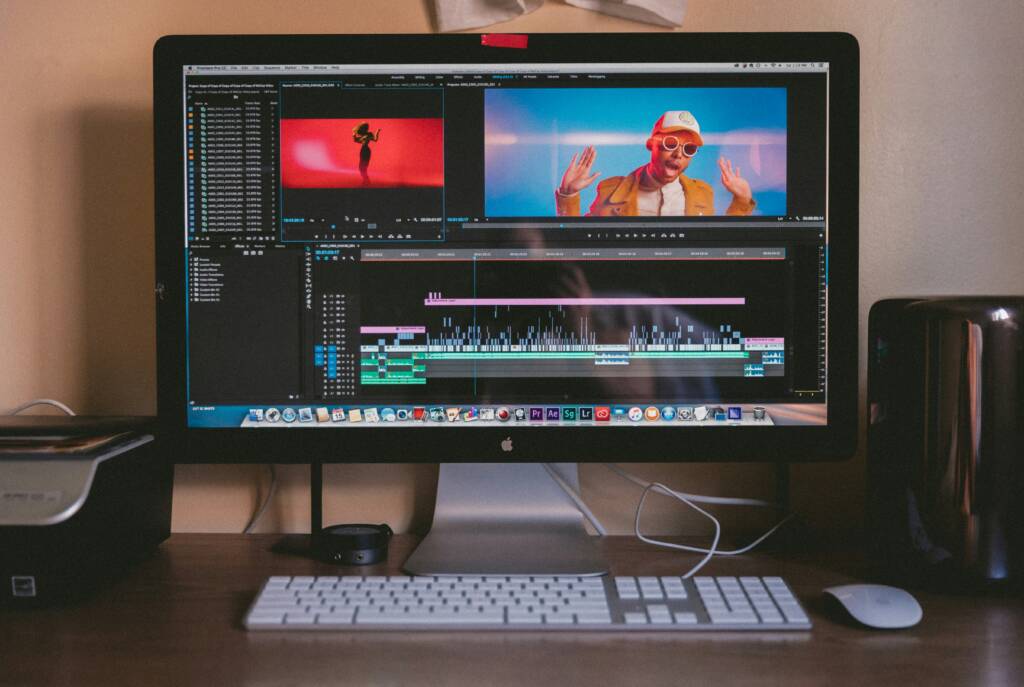
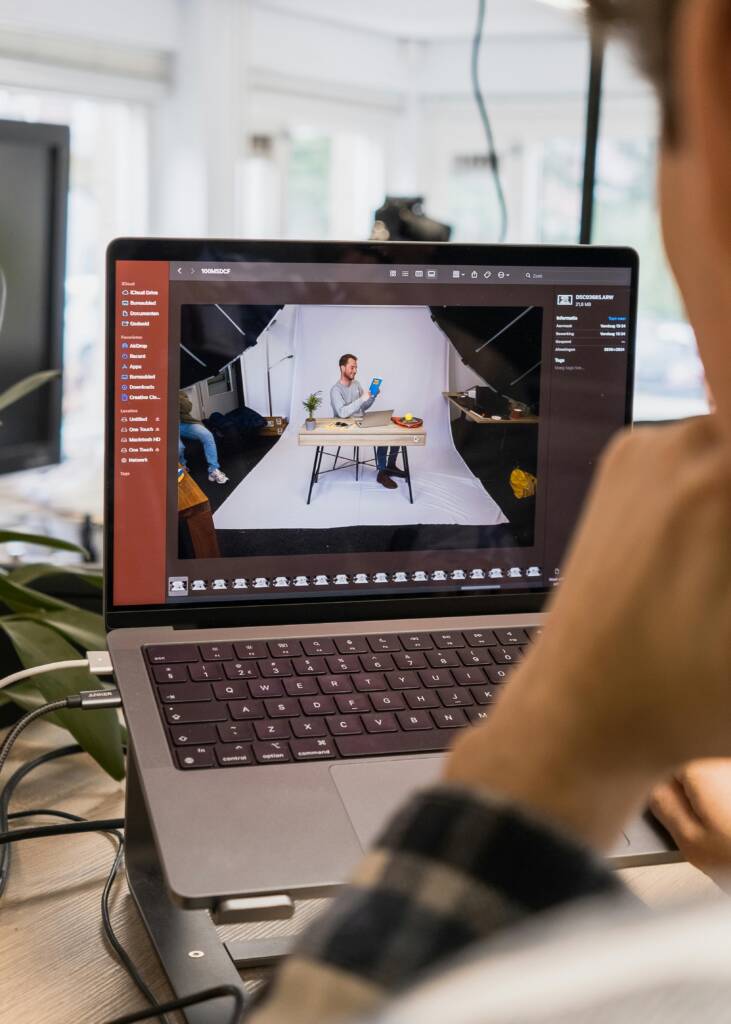
Creating engaging video content requires a blend of creativity and technical expertise. It’s all about turning that raw footage into a captivating story through the magic of video editing. Consider this – a video editor can take that shaky handheld footage you shot on your phone and transform it into a cinematic masterpiece. This involves cutting and splicing different shots together, adding music or sound effects, and perhaps even some special effects or animation. The key lies in understanding the rhythm and pace of video, as well as the power of the right visual effects to convey a message. It’s not unlike making a good mixtape – you’re creating flow, mood, and a narrative arc.
Now, you may be thinking, this surely must require high-end software and technical skills. Well, yes and no. Sure, professional editing software can give you more control and options. However, don’t discount free or inexpensive video editing apps that are designed specifically with content creators in mind. These can often be more user-friendly, and some have remarkable capabilities. You can even experiment with advanced techniques like color grading, speed changes, and adding on-screen text or graphics. Just remember, the tool is only as good as the hand that wields it. It’s your vision, and your storytelling ability that’s going to make your video content truly sing. So don’t just let your raw footage collect digital dust – give it the editing magic it deserves!
If you are interested in hiring us or learning more about our services, please contact us today or book a free consult with one of our specialists. We look forward to working with you!
